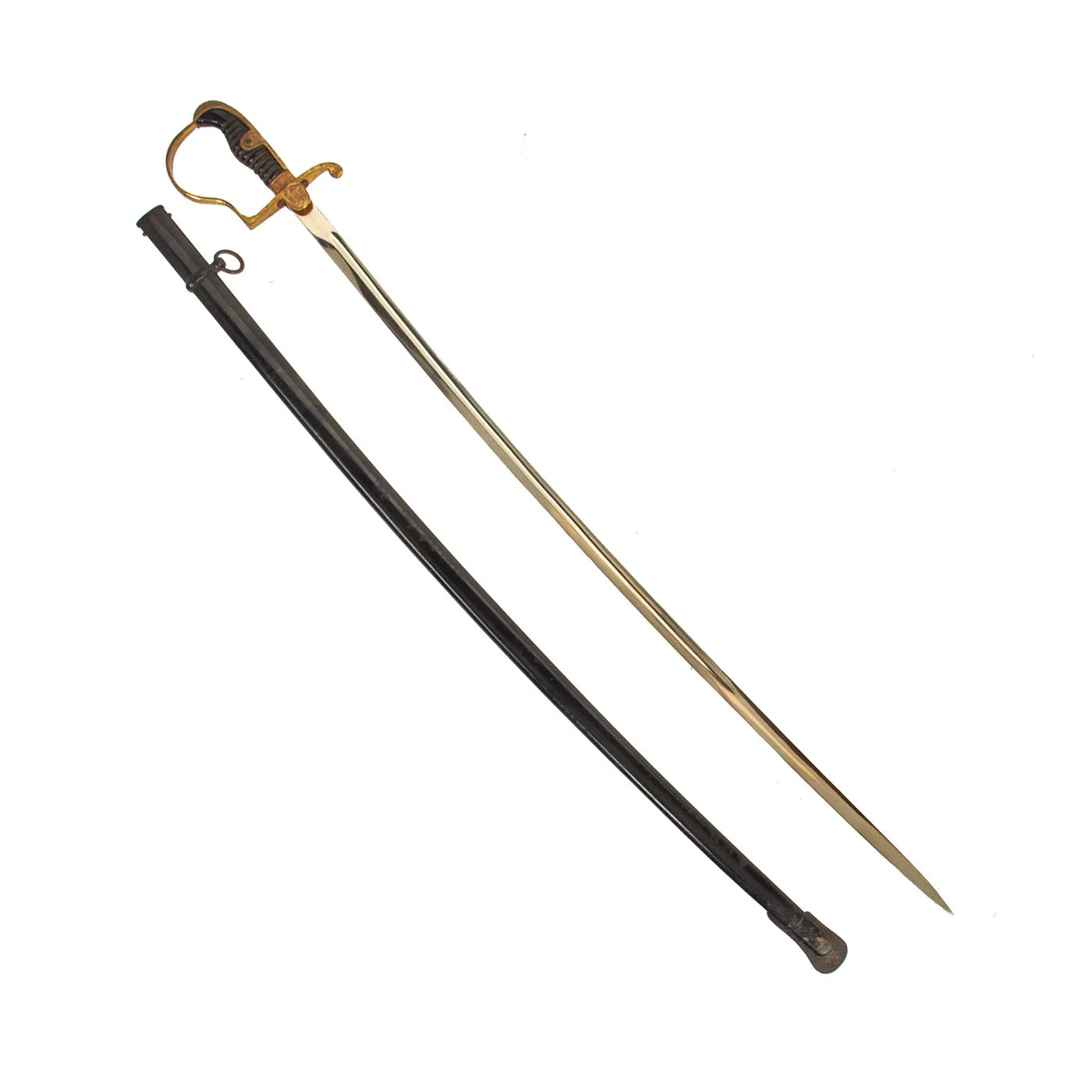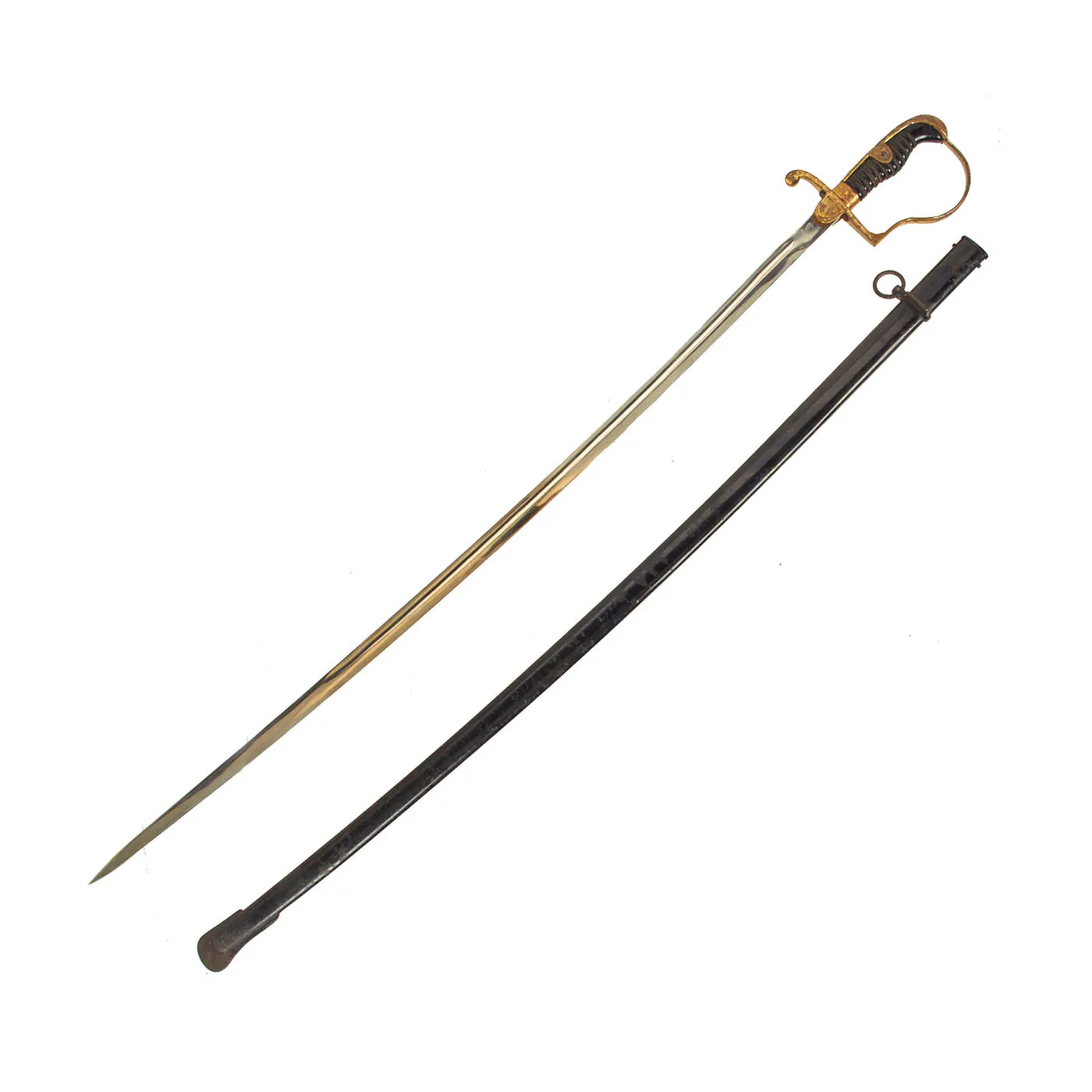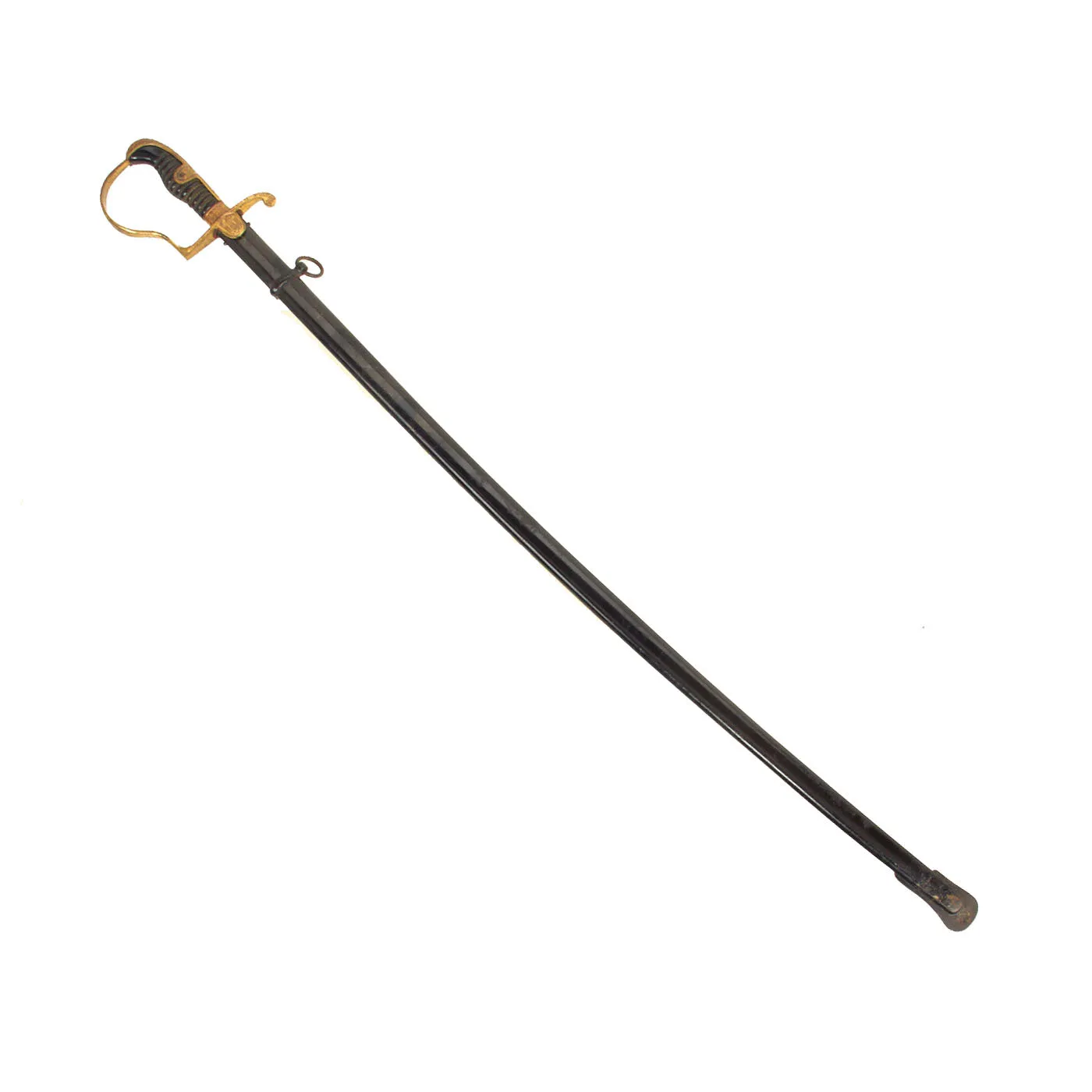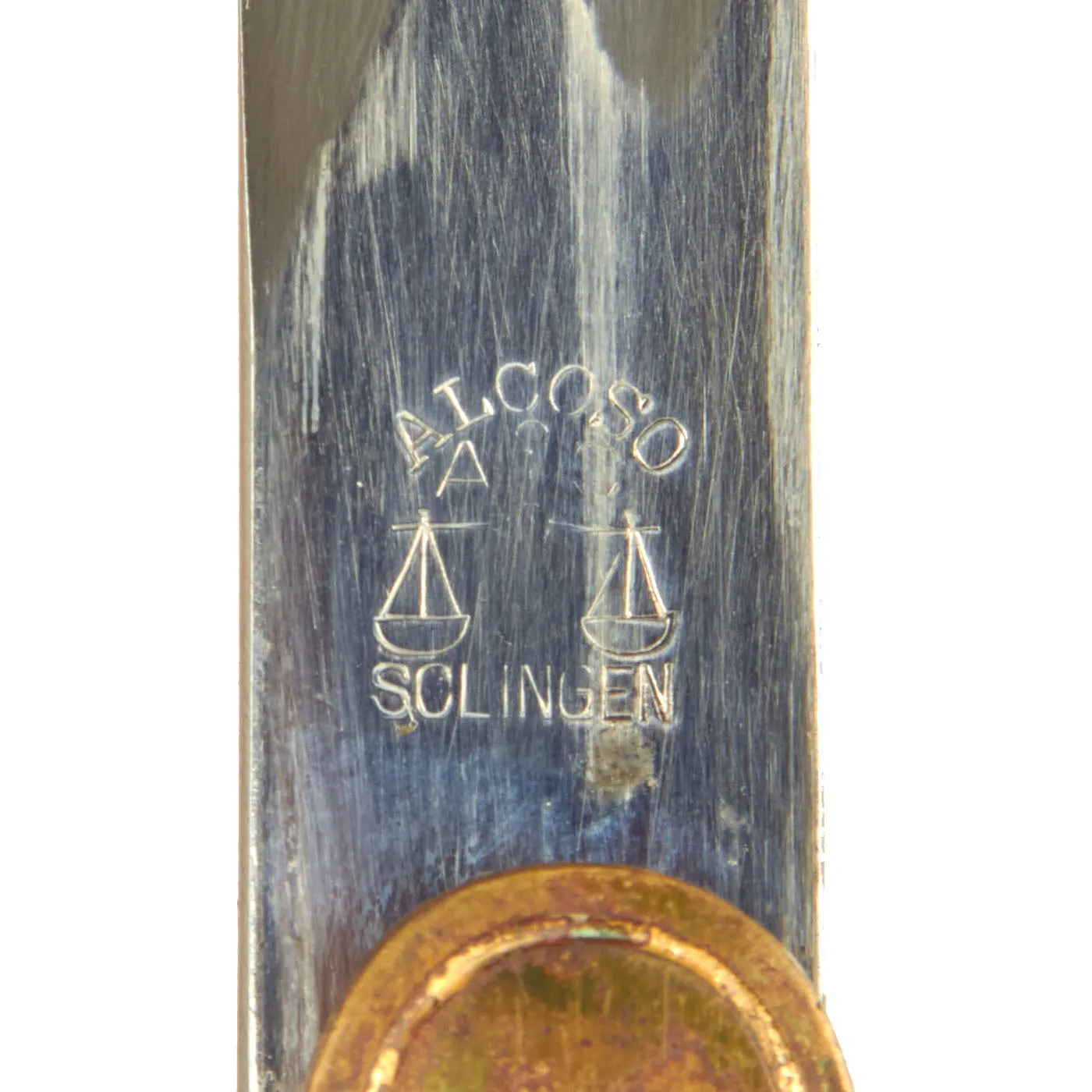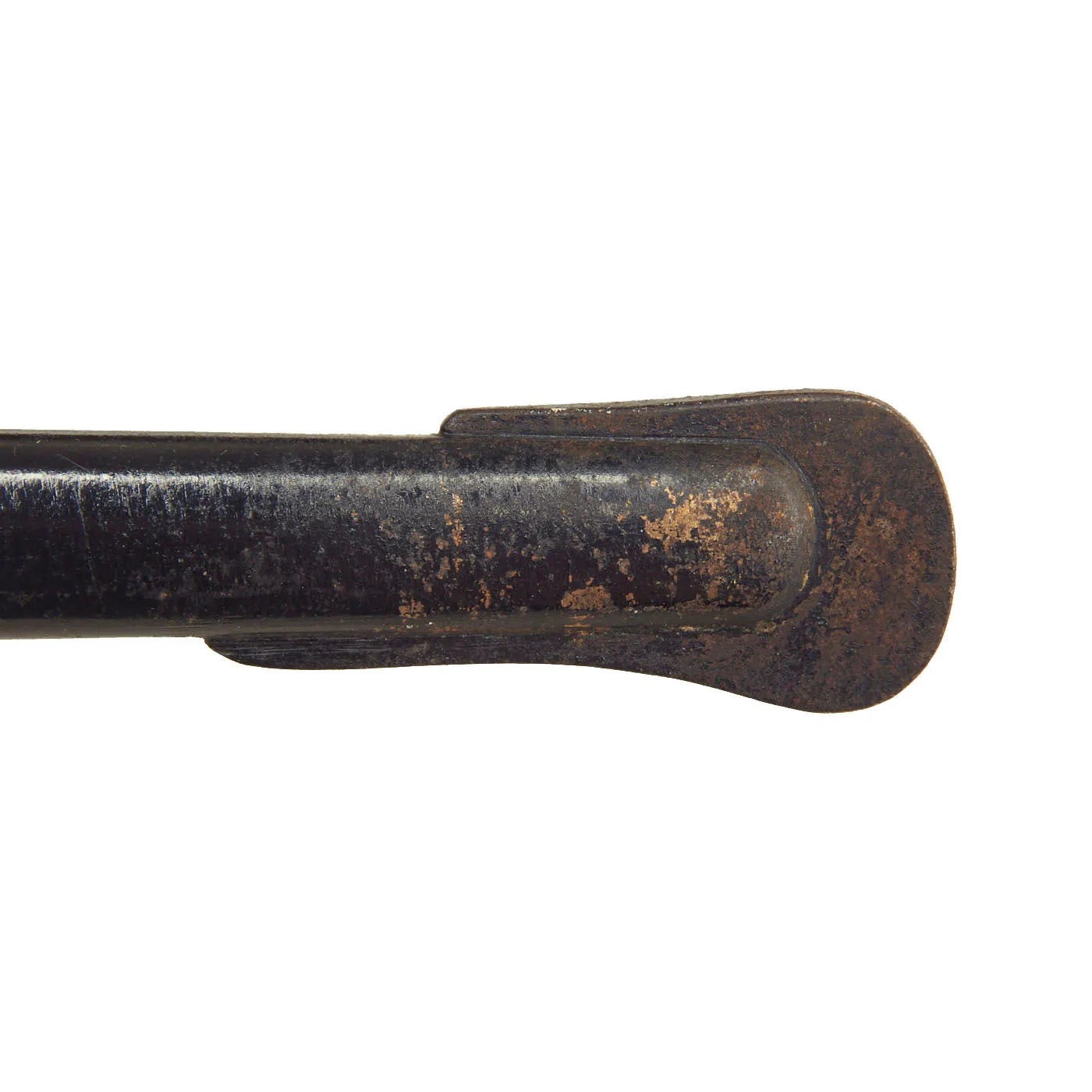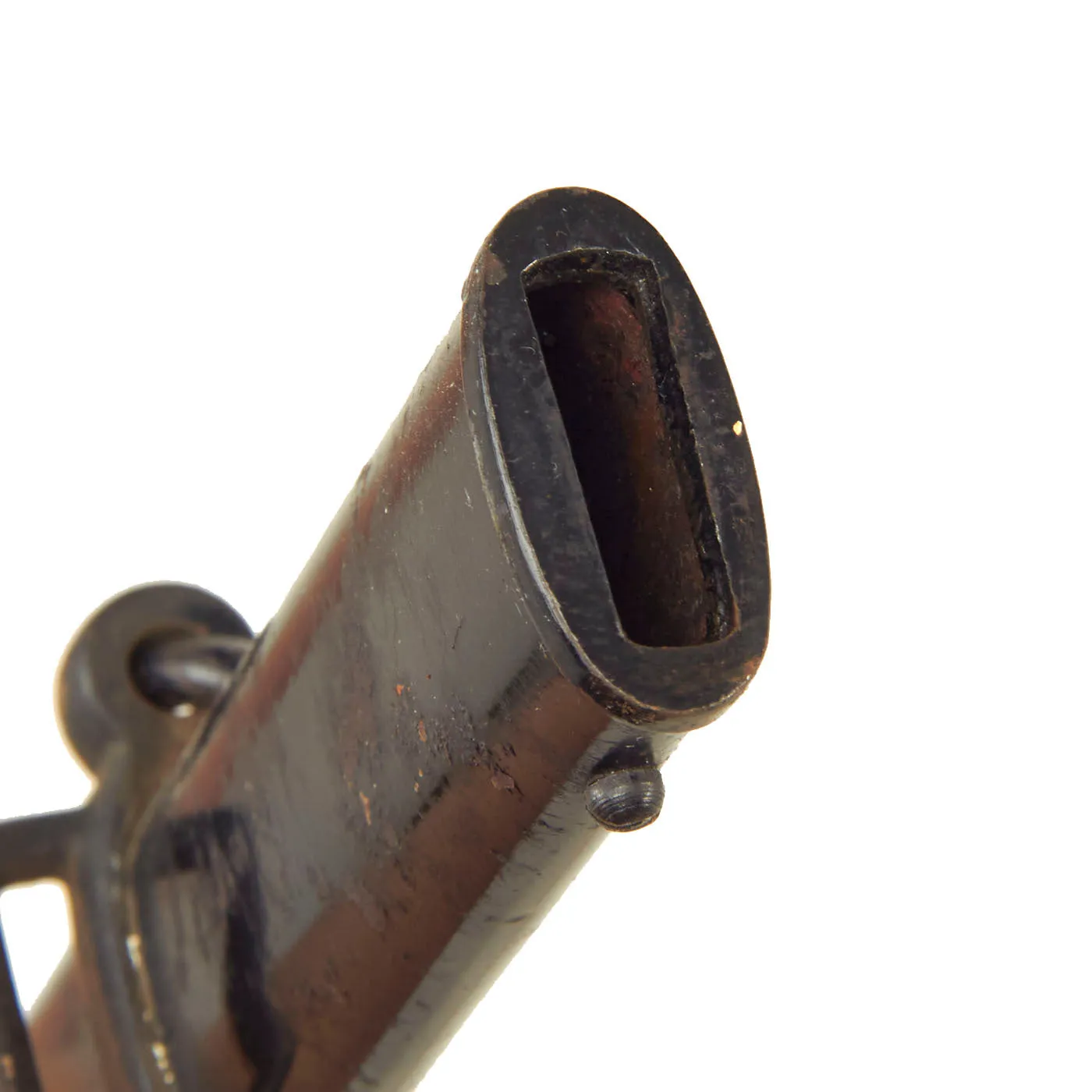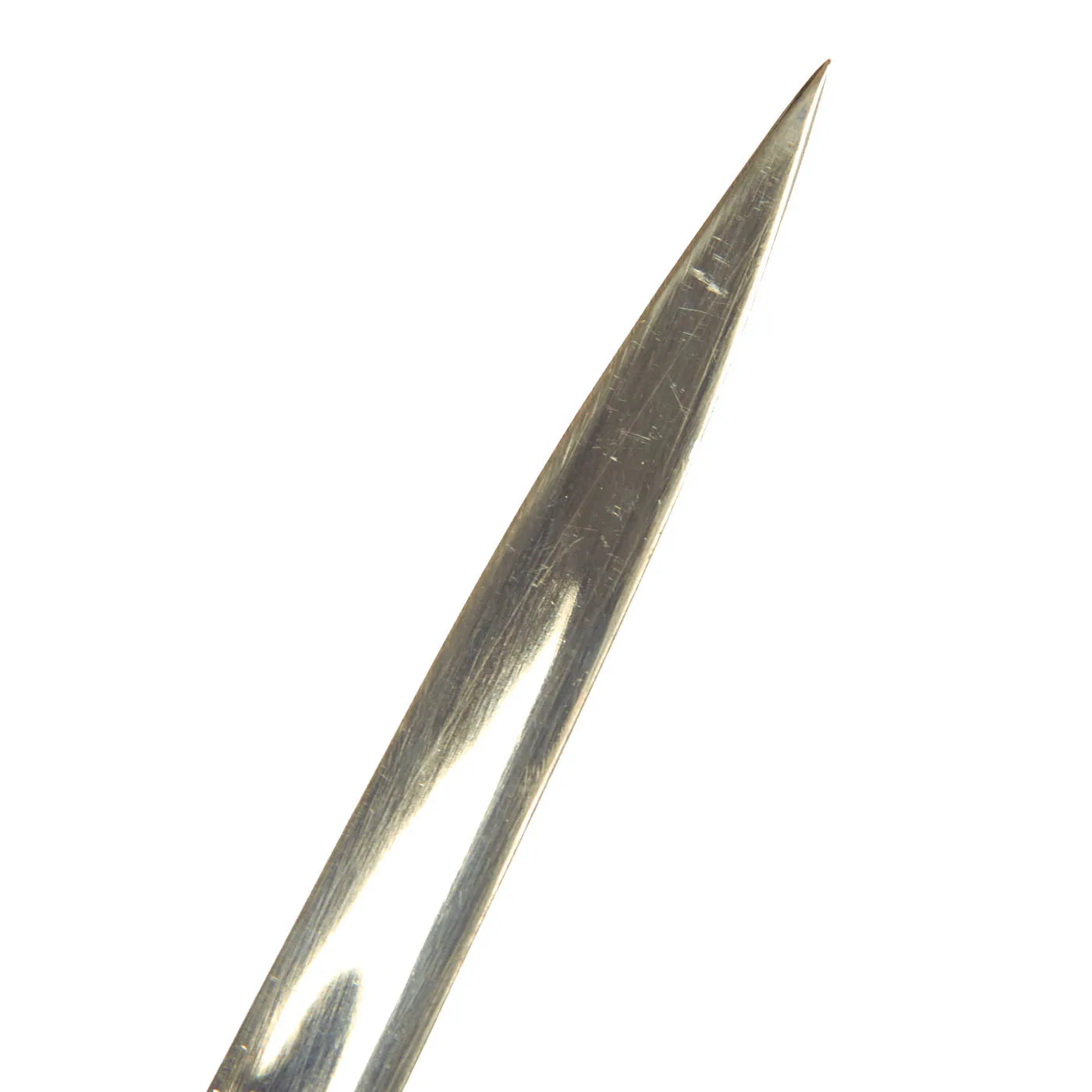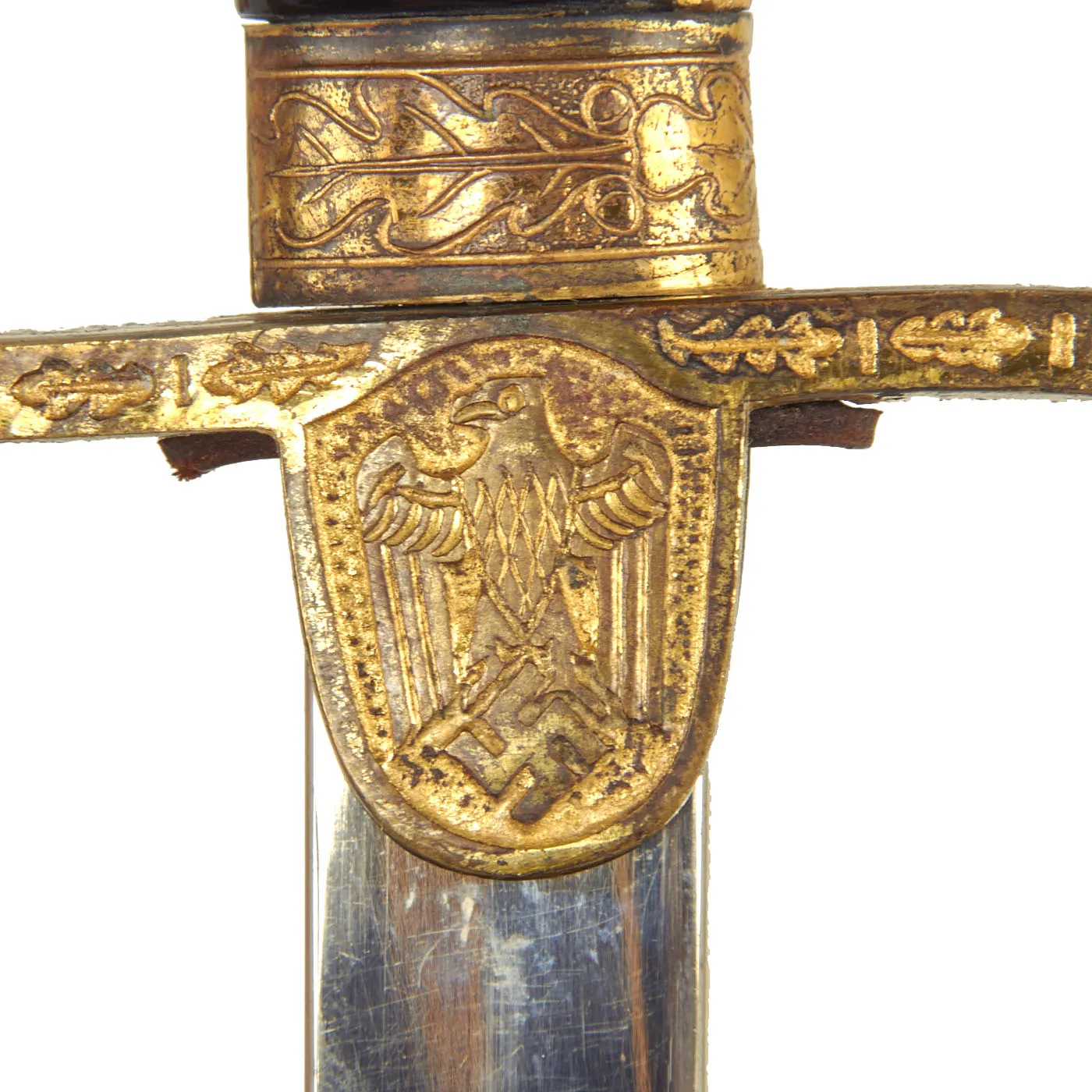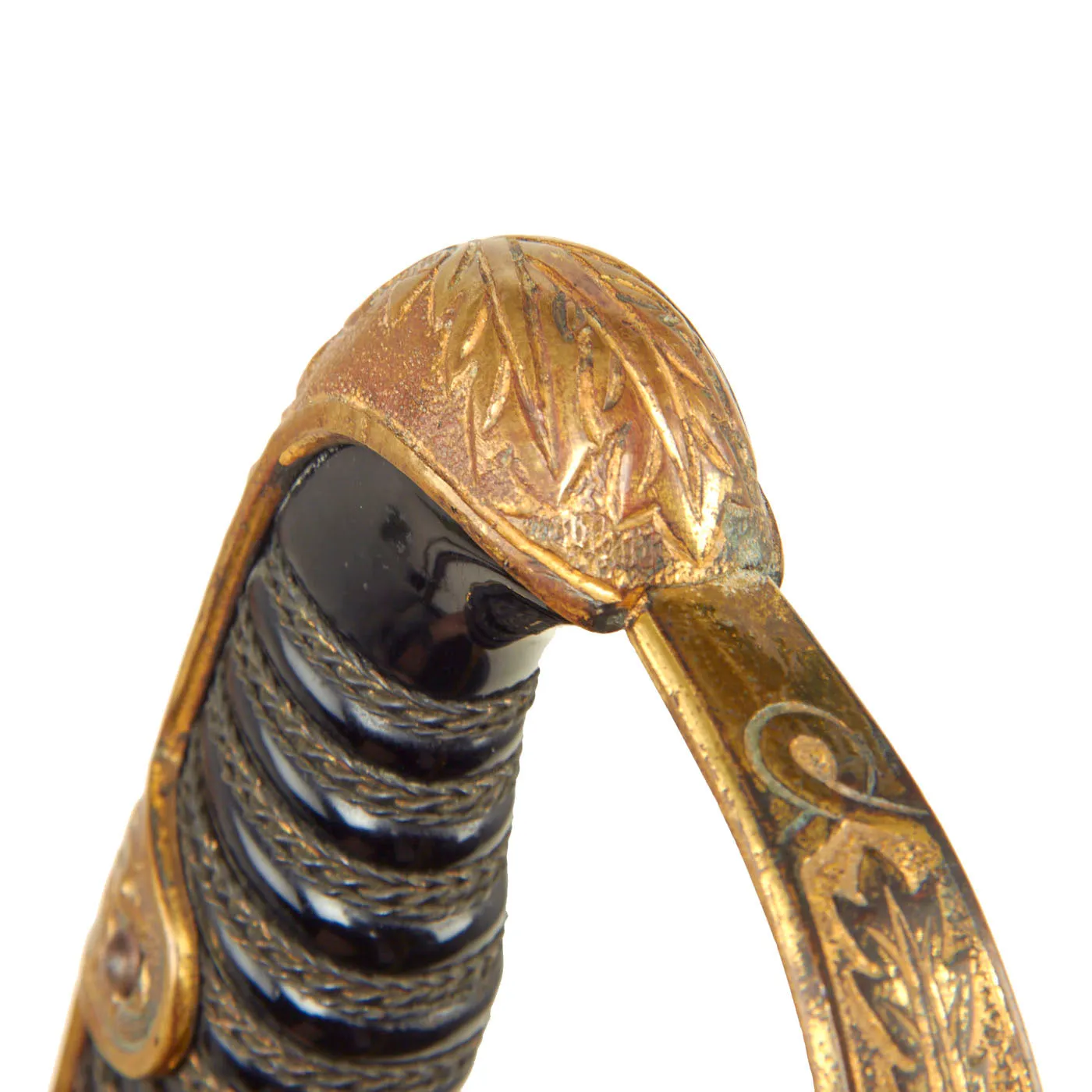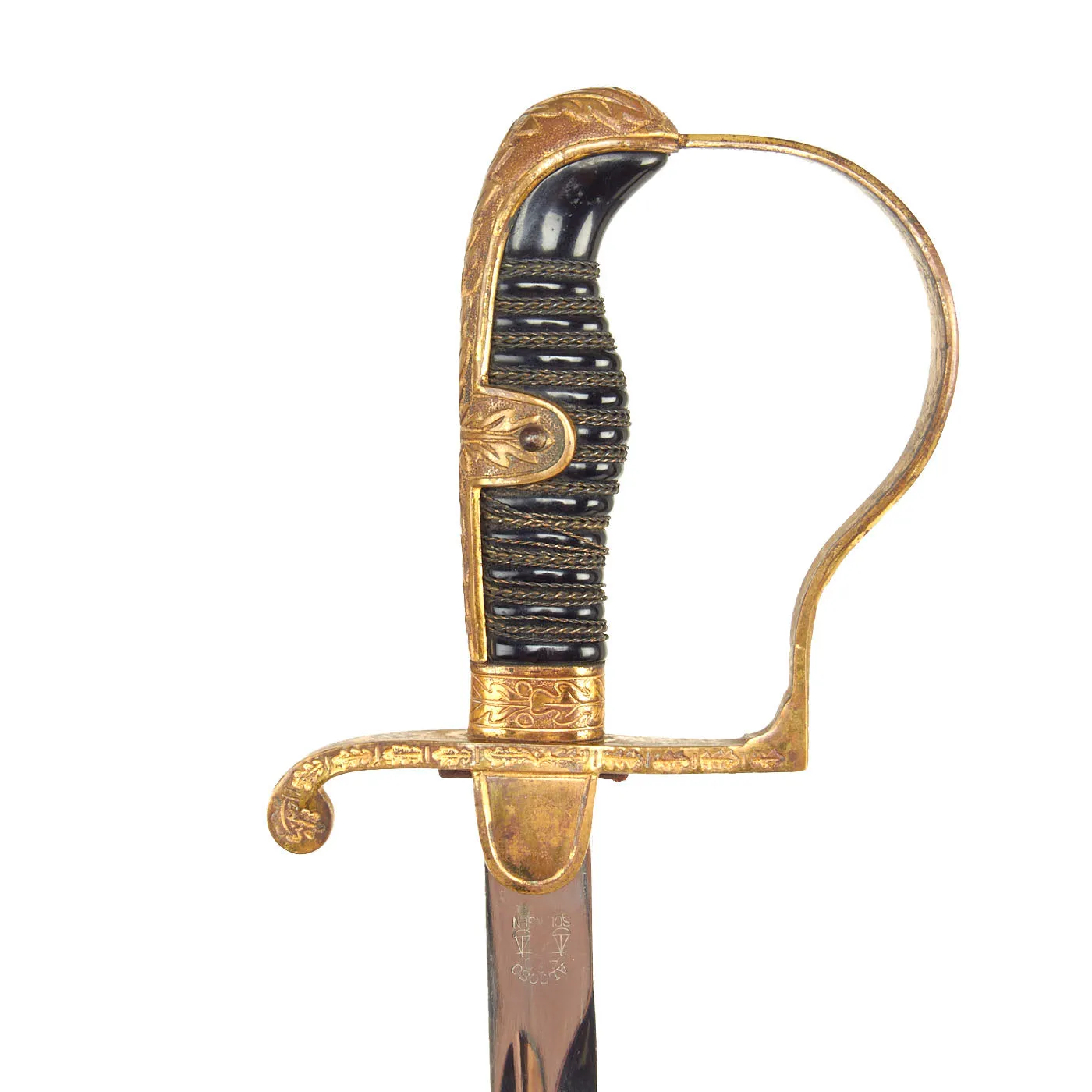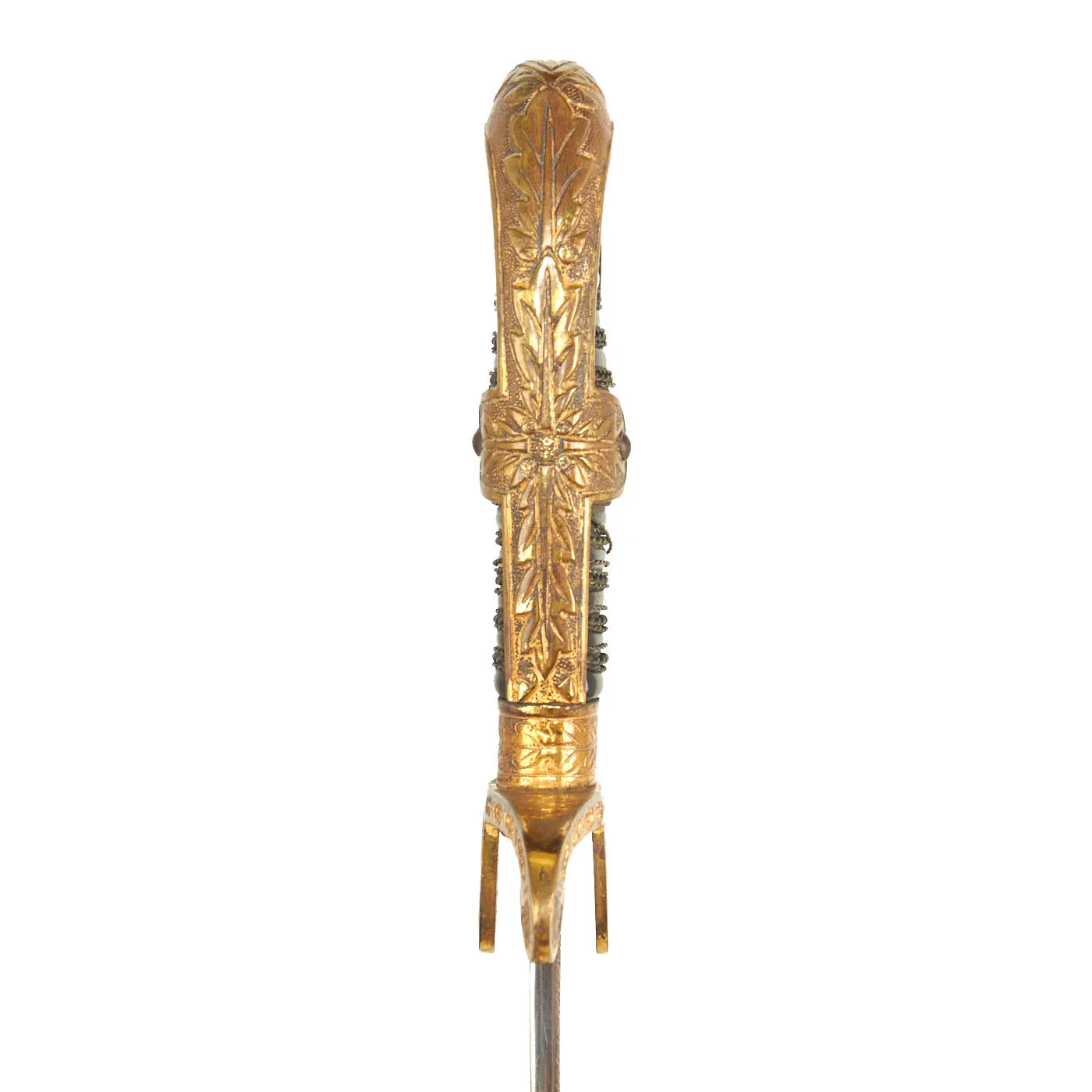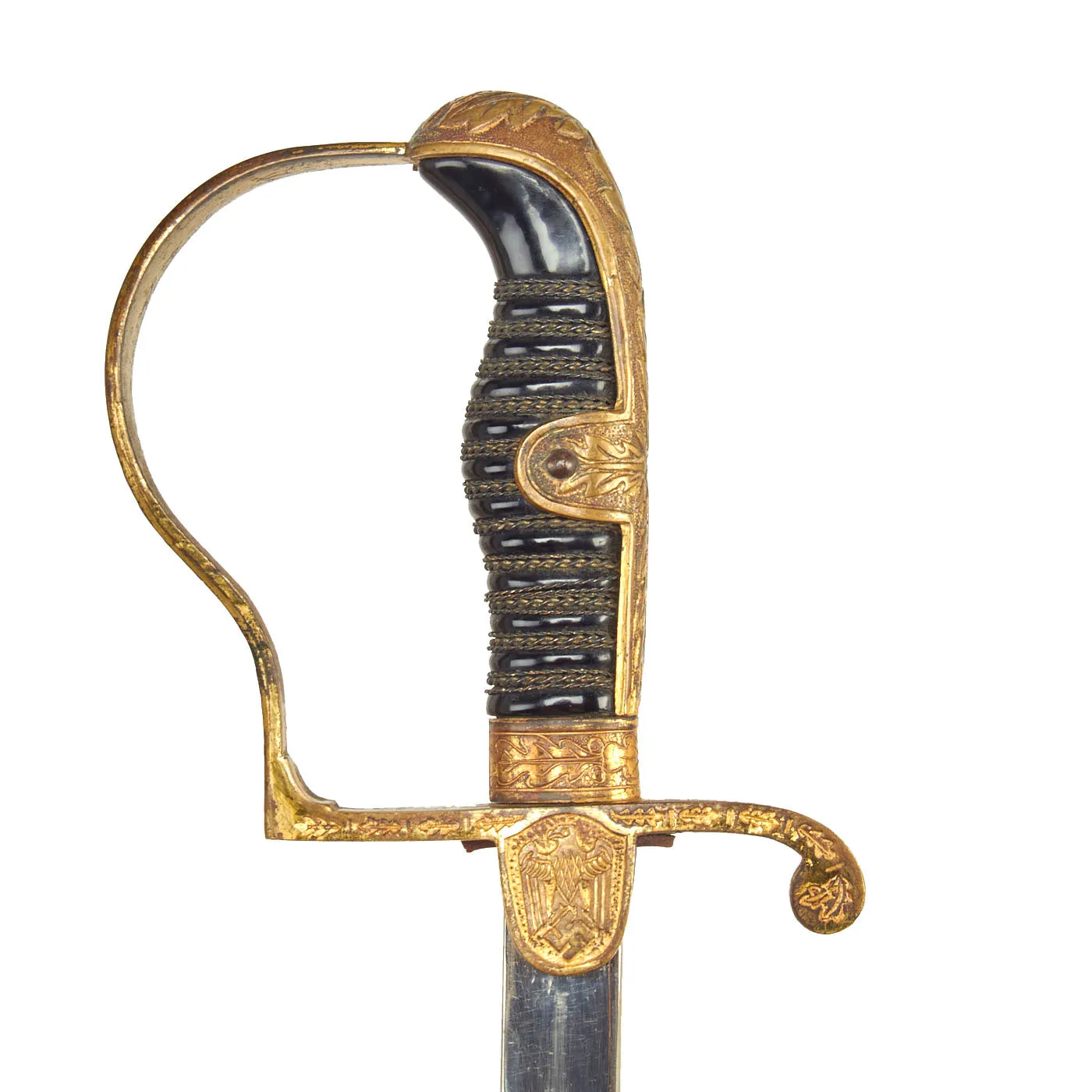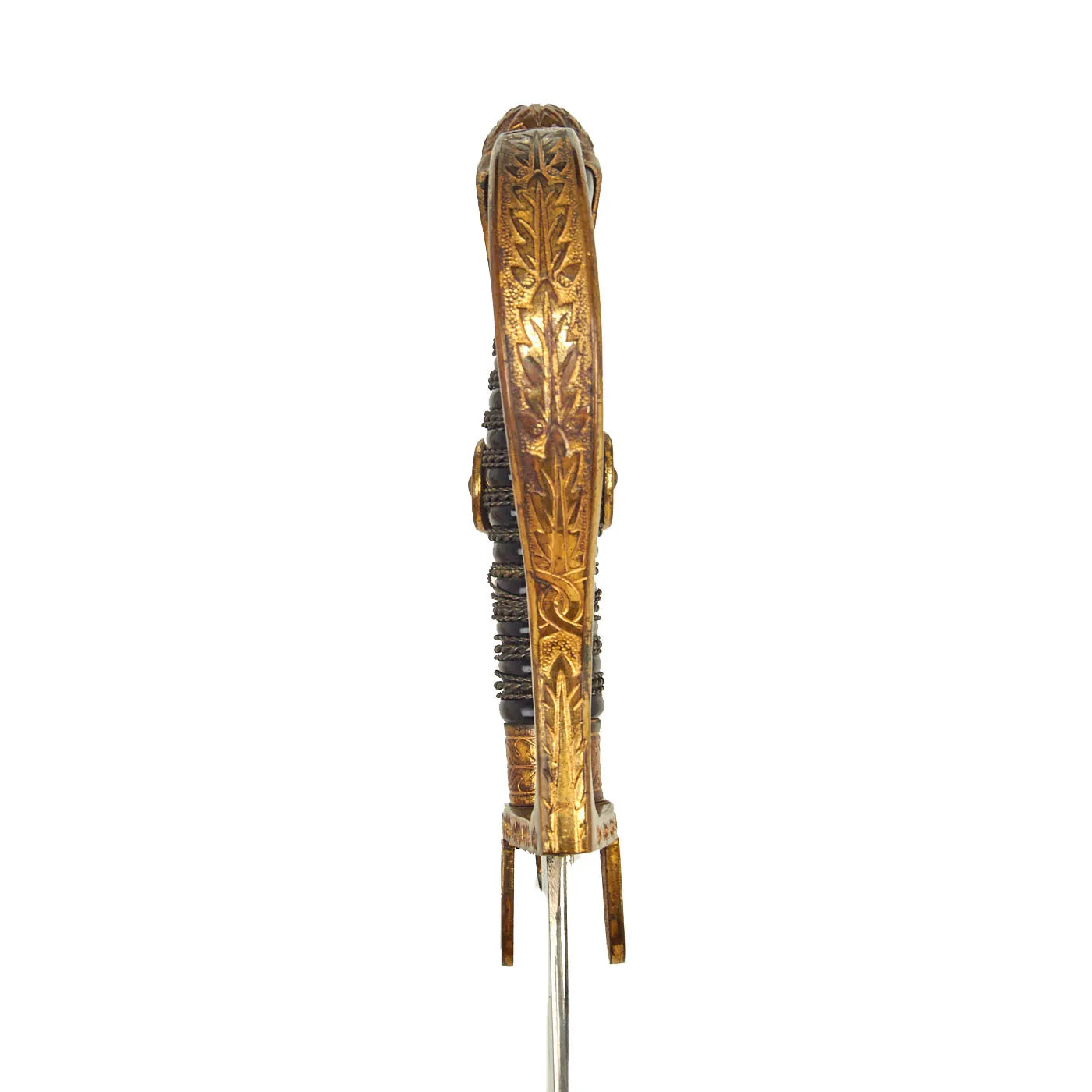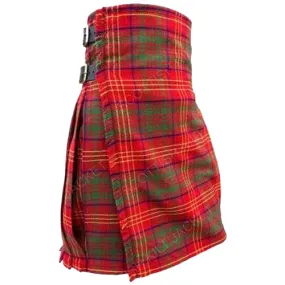Original Item: Only One Available. This is a lovely classic Army Officer's "Dove Head" Sword, made by the well-known firm of Alcoso Werke in Solingen, Germany, complete with the correct steel scabbard. The hilt of this example is produced of quality brass base with gilt on the hilt and all of the details are still there, though the gilt finish has partly worn away. The dove head and backstrap are engraved with art deco style oak leaves and acorns, a common decoration used on German ceremonial edged weapons, and these extend onto the side tabs as well. The "flat" P guard repeats this motif, as does the ferrule at the top of the grip. There are lots of hand enhancing and many of the backgrounds have received pebbled decoration.
The chappe/langet features a closed-wing Wehrmacht eagle, which shows excellent detail to his beak, eye, breast feathering, wing feathering, talons and mobile clutched swas. The areas around the swas are lightly pebbled. The reverse langet has a shield-shaped field, where the sword would sometimes be personalized, but this one is blank. The grip of this example is a black celluloid over a carved wood base, wrapped with three pairs of twisted wires, with the center pair being larger. The celluloid is still in great condition, without any cracking or major damage. The grip is wrapped with triple sets of twisted wire, though the wrapping is a bit loose in areas.
The blade of this example is really something, and is in nearly MINT condition! It is of highest quality steel and reflects a mirror bright nickel-plated finish. There is just a bit of scuffing and runner wear, with no damage to the edge or oxidation to the finish. The blade is 32 1/2 inches long, with the original leather blade washer is in place.
The reverse ricasso is stamped with the trademark Alcoso used from 1936-1940. It depicts the scales with the firm's initials, ACS interspersed. Above is the firm's name in an arc, ALCOSO, and below the town of business, SOLINGEN, the legendary "City of Blades" in Western Germany. The marking is partly under the langet, so it is not possible to photograph in its entirety
Alcoso is a trade name of Alexander Coppel & Co. KG, Stahlwarenfabrik, located in Solingen, the legendary German "City of Blades." Per J. Anthony Carter's work GERMAN KNIFE AND SWORD MAKERS, the company was a major manufacturer of edged weapons and tools from the end of the 19th century up until the WWII period. Unfortunately, as NSDAP-control increased, brothers Carl Gustav and Dr. Alexander Coppel, the Jewish owners of the firm, were forced out. In 1936 the firm had been "Aryanized", and started using the name ALCOSO to hide the Jewish family name. By the end of 1936 the brothers were ejected from their Solingen offices, and by 1940 the brand trademark initials ACS were changed to AWS to reflect the change in ownership and name: Alexander Coppel Solingen to Alcoso-Werk Solingen. Carl Gustav Coppel committed suicide in Solingen in 1941, and Dr. Alexander Coppel was arrested in 1942 and sent to Theresienstadt Prison camp, where he died August 5th 1942. The factory itself was destroyed by Allied bombers in November 1944.
The scabbard of this example still has very good original factory black lacquer, though there is crazing and checking due to age. Overall over 90% of the paint remains, with no dents that we can see, just some scraps and scratches. There is a bit of light oxidation on the drag the paint has flaked away. The original hanger ring is present, as is the slot for the hanger hook, used to "hitch up" the sword when indoors.
Overall an excellent example of a German Army Officer's Dove Head sword, from a maker with a somber back story.
Specifications:
Overall length: 37”
Blade length: 32 1/4”
Blade Style: Single Edged with Fuller
Guard dimensions: 5" width x 4 1/2” length
Scabbard Length: 33 1/4"
The German Army (German: Heer, was the land forces component of the Wehrmacht, the German armed forces, from 1935 to 1945. The Wehrmacht also included the Kriegsmarine (Navy) and the Luftwaffe (Air Force). During World War II, a total of about 15 million soldiers served in the German Army, of whom about seven million became casualties. Separate from the army, the Waffen-SS (Armed SS) was a multi-ethnic and multi-national military force of the Third Reich. Growing from three regiments to over 38 divisions during World War II, it served alongside the army but was never formally part of it.
Only 17 months after AH announced publicly the rearmament program, the Army reached its projected goal of 36 divisions. During the autumn of 1937, two more corps were formed. In 1938, four additional corps were formed with the inclusion of the five divisions of the Austrian Army after the Anschluss in March. During the period of its expansion by Adolf AH, the German Army continued to develop concepts pioneered during World War I, combining ground (Heer) and air (Luftwaffe) assets into combined arms teams. Coupled with operational and tactical methods such as encirclements and the "battle of annihilation", the German military managed quick victories in the two initial years of World War II, prompting the use of the word Blitzkrieg (literally lightning war, meaning lightning-fast war) for the techniques used.
The German Army entered the war with a majority of its infantry formations relying on the horse for transportation. The infantry remained foot soldiers throughout the war; artillery also remained primarily horse-drawn. The motorized formations received much attention in the world press in the opening years of the war, and were cited as the main reason for the success of the German invasions of Poland (September 1939), Norway and Denmark (April 1940), Belgium, France and Netherlands (May 1940), Yugoslavia (April 1941) and the early campaigns in the Soviet Union (June 1941). However their motorized and tank formations accounted for only 20% of the Heer's capacity at their peak strength.




